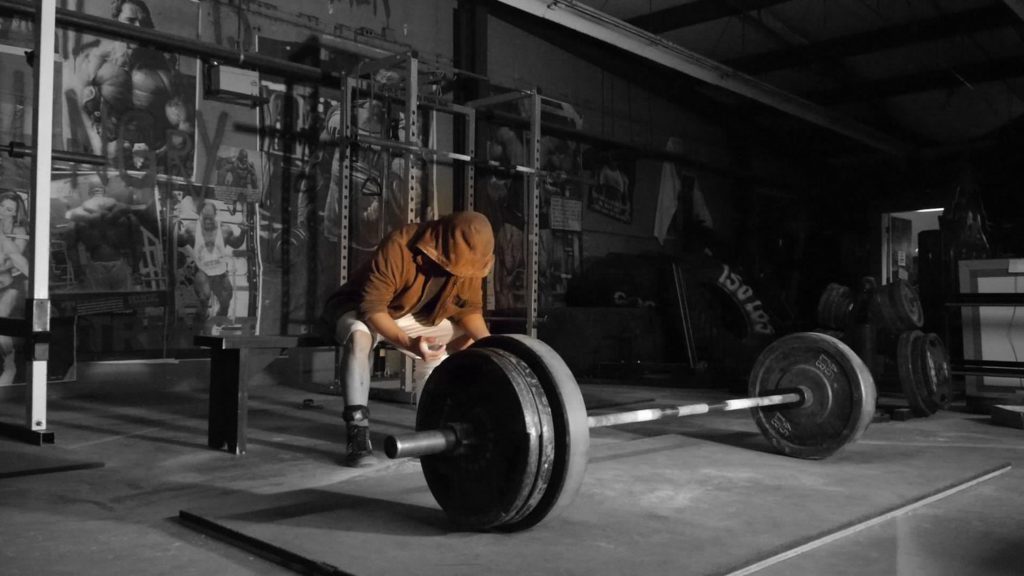In your practice of strength and conditioning, what are the core principles of your philosophy when managing athletes?
One of the early principles I learnt to develop when managing athletes was to always have myself in good shape and look like I was fit and followed the principles and practices that I administrated to individuals and teams where I was involved. Even to this day I train daily, sometimes twice daily and often these are challenging sessions. Athletes like to know that their strength and conditioning coach understands what hard work is, and what difficult training sessions feel like.
I have also found that knowledge and a scientific background are important. These along with experience provide the practice and methodology of what I present to people. My initial academic background was solid but not brilliant. I did well as a P.E undergraduate after a shaky start and then graduated with all A’s with my master’s degree. I have lectured at over half a dozen universities and was made a Research Fellow at two universities in England. And I have been fortunate both in Australia and overseas to be able to mix with and pick the brains of some of the leading academics in the world. Likewise, I have been fortunate enough to work in big sporting organisations that allowed me to tap into the expertise and services of our own A.I.S.
The Role of Strength and Conditioning Coaches in Injury Prevention and Rehabilitation
With regard to rehab and injury prevention, this has become an increasingly important role for strength and conditioning coaches. I have worked in some of the world’s foremost sports medicine authorities including physicians, specialists, physios, osteopaths and dietitians. You just can’t get this experience from the internet or a textbook. Regarding my actual philosophy, I haven’t let anyone steamroll me into one particular belief. I believe that in almost every situation, multiple solutions exist. Too many strength and conditioning coaches stereotype themselves and follow one only philosophy or ideology. This often leads to an insular approach to both learning and presentation.
Finally, I like to be honest and straight forward with people. I have worked in some very challenging team environments where many egos and personalities existed and an honest straight up and down approach was necessary to avoid problems and to optimise performance. Along the same lines, a good strength and conditioning coach must be seen to be fair and equitable. I have seen too many who want to be the friends first, and strength and conditioning coach second and this leads to having and playing favourites and inconsistency in approach. I always follow to the letter the principles of training.

What have been the main changes in the approach to conditioning elite athletes during your career to date?
The biggest changes in the conditioning of elite athlete’s has come with new technology and equipment available, as well as the vast amount of scientific data now available to prove and to disprove certain practices.
I remember back in the early days when rowing A Grade with Collaroy SLSC. We trained once per week at City Tatts under the tutelage of the legendary George Daldry. For those who don’t know George, many considered him a fascinating character. At the time, and even now, people regard him as one of Australia’s leading fitness gurus. He looked after the Olympians, several Kangaroo Teams and many other elite sporting teams during the 70’s and 80’s from a background of pure hard work. There was very little, and after no science involved.
You see George was a P.O.W at Changi Prison at age 16. He lived a tough live and believed that all training sessions should be as tough as possible. I remember one session in summer where he had the air conditioner turned off and all the windows shut. The session went for two- and a-bit hours. Before and after the session, I weighed myself and lost over 4 kilos because we were not allowed to stop for fluid intake. The session was a real flogging and arguably the toughest I had ever done. The session was tough and hard, but it probably only marginally made us fitter rowers. In hindsight, the same benefit could probably have been achieved in a 30 to 40-minute session.
From Traditional Methods to Technological Advancements
I saw George a few years ago before he died. Well into his 80’s, he was belting away at the heavy bag at Bondi Icebergs Gym in Sydney, still training hard and tough. From George, I learned a valuable lesson: hard work is essential for fitness gains, but understanding sports science can save significant time.
Science and technology have certainly changed the landscape. I have worked professionally for over 30 years and have seen many significant changes. In the 90’s, I began using Telemetry at both The Broncos and The Wallabies, two of the most successful teams where I have been involved. In fact, in 1999 our World Cup winning year we were the only national side to use heart rate telemetry. We also used a ballistic measurement device (introduced at The Broncos in 1996 by Dan Baker) to measure definitive power. These two pieces of technology gave us a great advantage over other teams, and I believe were instrumental (along with a myriad of other factors) to our success. Now nearly all teams have bespoke sports scientists, downloading GPS data, HR files, speed and power information and much more.
Changes in Recovery Protocols, Diet, and Nutrition in Elite Sports: A Look at the Evolution of Recovery Methods from the 1990s to the Present Day.
In essence, they lacked traditional recovery methods. Now, compare this to my recent experience with the Guinness Premiership detailed below.
At Leeds Carnegie Rugby (2009-2011), we DXA scanned all players for total body composition analysis at the beginning, middle, and end of the season.

In your opinion, where do some young strength and conditioning professionals get it wrong?
1) As stated previously to many pigeonhole themselves: “My way or the highway”. I used to be a bit like that but have probably learnt more in the last 10 years that I have in the previous 30 years. You have to remain open and continue to learn and be prepared to be flexible in approach.
2) Let egos get in the way. There are enough egos in professional sport already, without adding any more. At Fulham, where the majority of players were really overpaid and under-worked, I encountered more egos than cold water days. In the early days I let it get to me, even to the point of getting into a few physical challenges. I soon learnt that if I reduced my ego a bit or even eliminated it, things worked out better. Wayne Bennett NRL Coach once told me when I was having trouble with one player in particular who continually argued and contested what I wanted to do: “Nancy, if you continue to lower your standards and talk and argue with idiots you will start to behave like an idiot yourself”.
3) Valuable advice. Strength and conditioning input is only a part of the athlete / team the success. I know several well-known strength and conditioning coaches who believe this. Don’t get me wrong the strength and conditioning component is critical. But so is the coaching, medical support, management, the activity and attitude of the players themselves and many other factors. Just like there is no “I” in TEAM, the success in team sport is a real team effort. I don’t remember any success where the whole team was not effective. i.e. no weak links in the entire structure.

What important qualities should strength and conditioning professionals have in order to be successful in getting the performance outcomes with athletes?
Honesty and integrity should be the most important qualities for any position, whether it be sport or in general. One has to be honest in approach and practice and if you do not possess a high level of integrity in both attitude and knowledge, then athletes will quickly catch on. One thing I learnt very quickly is that you must treat everyone equally and definitely not play favourites with anybody.
That aside and like I mentioned before, a good strength and conditioning coach should be continually learning and listening. Back in the 90’s I went away to The States on a study trip with the Broncos. Just before I left, Wayne Bennett, The Coach at the time called me aside and gave me a bit of advice. He said: “Nancy, God gave us 2 eyes and 2 ears but only one mouth, when you go to learn, use them in about that ratio”.
The Importance of Sharing Knowledge
One thing that annoys me about a growing number of strength and conditioning professionals is their reluctance to share. This may sound socialist, but it’s true. Most of my career lessons didn’t come from university or textbooks. I learned from experience and others. Strength and conditioning coaches can be protective. They often think they’re unique in their methods.In the 90s, a well-known strength and conditioning coach printed his strength programs on dark-colored paper to prevent photocopying. He ensured athletes returned old programs before handing out new ones. Don’t get me wrong, I am not advocating carte blanche to all intellectual property, just the opportunity of young strength and conditioning coached to learn from others.
Conclusion
Finally, I believe that to be good you have to be innovative, be a doer not a follower. Sure, copy aspects that have been successful elsewhere, but be creative enough yourself to develop your own stamp on things. This aspect is often worst in testing procedures. How often do you see a rugby or league team doing the Yo Yo test or Beep test when they could and should be doing tests that are totally specific to their sports?
We had a Broncos conditioning test I developed, The ARU Fitness Test when I was with the Wallabies and The FOFFT (Fulham On Field Fitness Test) when I was at Fulham FC in the EPL. All tests were specific to their sports and I did not copy a test from another sport even though they may be past their use by date now, they gave myself and the coaches valuable feedback on game specific conditioning.
If you enjoyed this article, you will be interested in Youth Coaching Advice, or Programming for sports specific training, or the make up of an in season week.
Learn more about strength and conditioning in the Certificate IV in Fitness , Diploma of Fitness and Diploma of Sport
If you have are interested in studying to work in the Fitness Industry, you can schedule a phone call with our Careers Adviser, just click in the image below.

